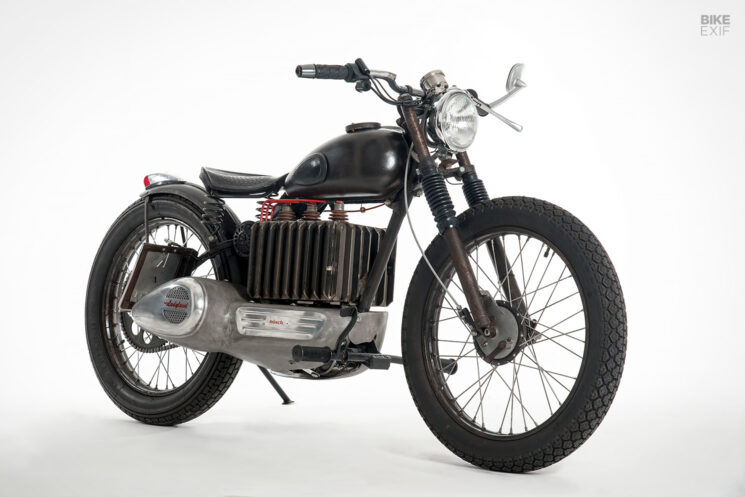
If you have an old motorcycle stashed in your garage, backyard or basement, waiting for its turn on the workbench, you’re not alone. Old bikes can spark joy—but they can also take a lot of time and patience to get them to where they can spark joy.
Jürgen Becker, a comedian and actor from Cologne, Germany, can relate. He took pity on a 1955 Minsk M1A that was destined for the junkyard, graciously adopting the diminutive two-stroke. Then he brought it back to life as a vintage electric bike and named it after a Jimi Hendrix album.
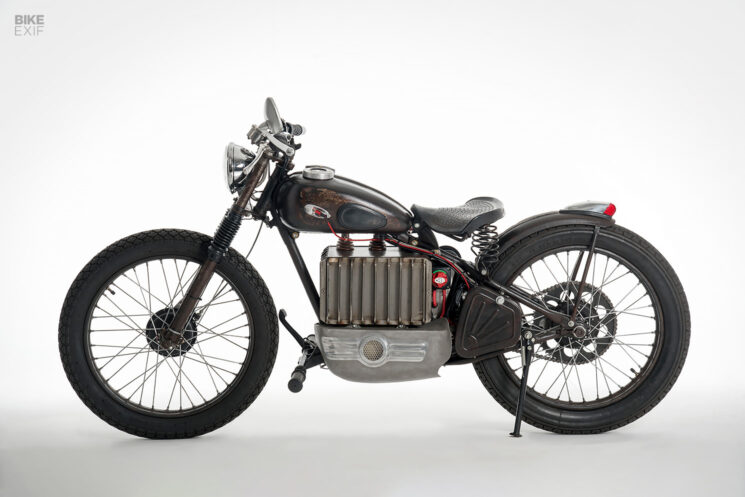
If the M1A looks familiar, that’s because it’s technically a DKW RT125—the same bike that was copied and sold around the world under different names. America calls it the Harley-Davidson Hummer, Japan reverse-engineered it into the Yamaha YA-1; in England, it was the BSA Bantam. Suffice it to say, DKW lost one hell of a formula when they were forced to hand over the RT125 design drawings as war reparations.
Like many people in his situation, Jürgen had this old bike in his hands, with no clear plan to get it back on the road. Then it hit him like a wave of instant torque; why not electrify the Minsk and create a one-off electric motorcycle? Teaming up with his friends Klaus, Dirk, Norbert, and Helga, Jürgen wheeled the bike into his workshop and queued the music.
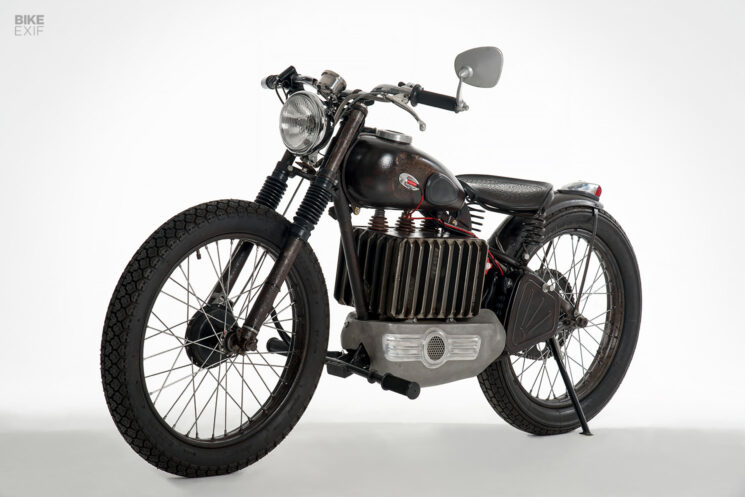
“Do electric motorcycles always have to be modern, clean, or even sterile?” pondered Jürgen. “After all, the electric motor is older than the combustion engine.”
With that thought in mind, the crew removed the Minsk’s entire drivetrain. Gone is the tired smoky two-banger, replaced by a beautifully-designed electric motor that draws inspiration from the legendary longitudinally-mounted four-cylinder engines of Henderson and Indian. To achieve this look, Jürgen and co. designed custom casings for the battery (upper section) and motor (lower section).
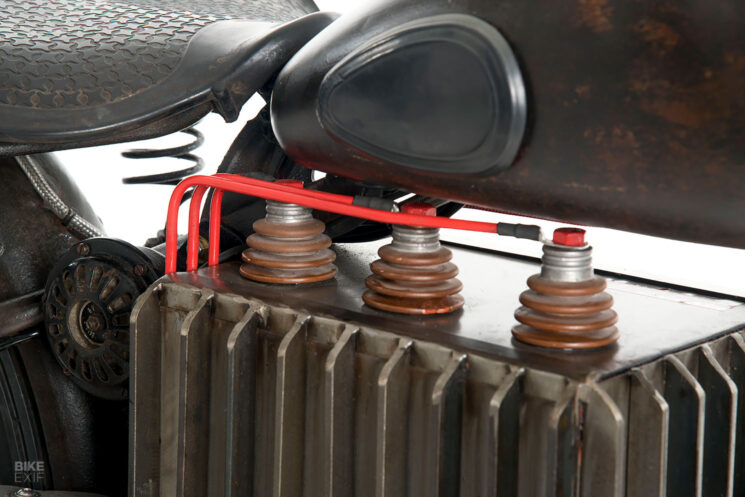
The housing for the 45 Ah battery features a ribbed metal design and is capped with three antique insulators, recalling the aesthetics of early industrial electrical systems. Sitting below it is our favorite part of the build—the engine. Or, more specifically, a custom-made cowling that hides the engine.
It was built by one of Jürgen’s collaborators, Norbert Büsch, and designed to resemble an old cast iron part. The connection to Henderson and Indian is obvious, but it also invokes a touch of jet-age design. The motor that it houses is rather small; a compact Revolt RV120 unit, sitting on the right side of the bike.
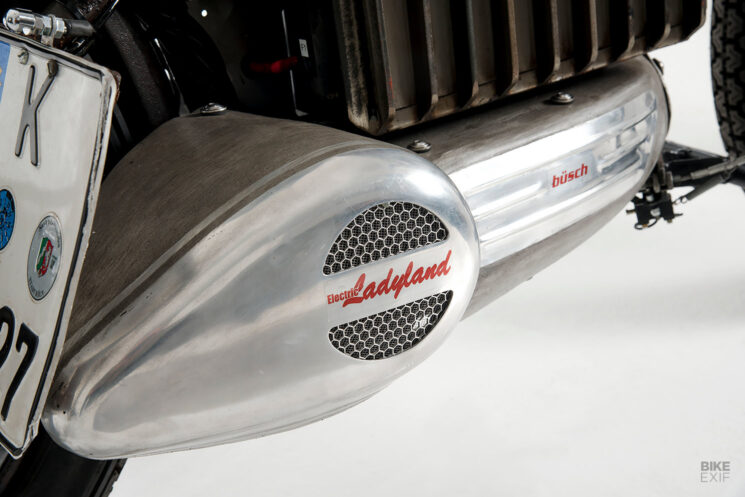
“The advantage of electric motors is that they are smaller and lighter than their combustion
engine counterparts while delivering the same power, so they can be placed in completely different locations,” Jürgen explains. “In this case, the decision was made to install the motor on the side. Since the motor only weighs around 4 kg, this is not a problem in terms of driving dynamics and opens up new design possibilities.”
The frame, suspension, and wheels are all original, but they’ve all been refreshed in some way. New tires were spooned onto the rims; a 19” Fortune on the front, and a 19” Metzeler on the rear. The 125 mm front and rear drum brakes were rebuilt with fresh cables.

The original Minsk handlebars were re-fitted and spruced up with fresh controls. A 5” headlight provides far more illumination than the factory candle holder, and a single Daytona speedometer adorns the bars. The motor takes up the space where the foot pegs once were, so they were moved forward (these bikes are deceptively small, so we’re sure Jürgen appreciates the extra legroom).
The old fuel tank now houses the charge indicator and battery charging port. Behind it sits the original sprung single seat from 1955, floating above the rear guard which was cut down and relieved of its luggage rack. A marker light from a caravan was repurposed, rather ingeniously, as a taillight.

To inject some classic rock’n’roll into the bike, Jürgen embedded the jack socket from a Fender Stratocaster guitar into the side of it. So the bike doesn’t run until you effectively ‘plug’ it in. Dubbed ‘Electric Ladyland,’ this revived Minsk’s old-world charm belies the fact that it runs on batteries.
“Perhaps it will encourage even more talented bikers to convert motorcycles that are over 70 years old to electric,” says Jürgen. “Because instead of creating a divide between petrolheads and e-fans, the Minsk combines the best of both worlds.”
Jürgen Becker | Facebook | Images by Manfred Linke
